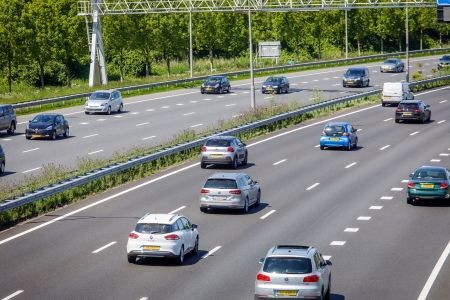Assessment of thirty international studies shows that using a three-point seat belt reduces the risk of a fatal outcome or serious injury after a crash by about 60% for the occupants in front and by about 44% for the occupants in the rear of the vehicle [11]. In terms of specific injury, a different assessment of 11 studies found that wearing a seat belt resulted in fewer injuries to the face, abdomen and back. No significant effects were found for reduced injuries to the head, neck, limbs, and breast region.
A seat belt appears to offer better protection to middle-aged men than to older occupants (65+) [54] or to women [54] [55]. A reason might be that seat belts are tested with a dummy shaped like an adult male [56] [57]. Compared to an adult male, older people have relatively brittle bones for example, which increases the risk of broken ribs due to the impact of the seat belt in a crash [58]. Crash studies explain the difference in injury severity between men and women, when both wear seat belts, by pointing out that women’s necks are usually thinner and their neck muscles less strong [54] [55]. In a crash, the seat belt keeps the body in a fixed position, but not the head. Together with a head restraint that is not in an optimal position (for, also tested on a dummy shaped like an adult male) this increases risk of whiplash-related injuries.
On 1 January 1971, attachment points and front seat belts became mandatory. On 1 June 1975, seat belt usage for the front seats became mandatory and on 1 April 1992 for the rear seats as well. In a 2010 sample, 97% of the car occupants in the front seats wore a seat belt, and about 82% of those seated in the rear [59].In 2020, a similar sample found 99% of car occupants wore seat belts without distinguishing between front and rear seats [60]. In fatal crashes, occupants were proven to have worn seat belts less often; on Dutch national roads, a quarter to a third of the deceased occupants had not worn seat belts. Over half of them were completely or partly ejected from the vehicle [61] [62].
The safety effect of seat belts is greatest when they are worn correctly, namely fitting snugly across the body [63]. When a seat belt has too much free play, a collision will increase the pressure on the body, which may result in broken ribs or a broken sternum. Therefore, occupants should not wear thick coats, nor should they carry things in their pockets that could be pressed into their bodies. If the belt has too much free play, the occupant may slide under the seat belt, which will result in internal injury to the abdomen due to the hip belt, and injury to the legs due to contact with the rigid parts of the car. The diagonal part or shoulder part should not be too close to the neck, but should fit diagonally across the middle of the shoulder and the middle of the sternum. To achieve optimum fixation of the shoulder, cars often have an adjustable upper anchor point that users can adjust themselves, depending on the length of their upper bodies and the chair position. The hip region of the belt should be as low as possible, and should not touch the abdomen to prevent organ injury, which is especially important for pregnant women [64].
